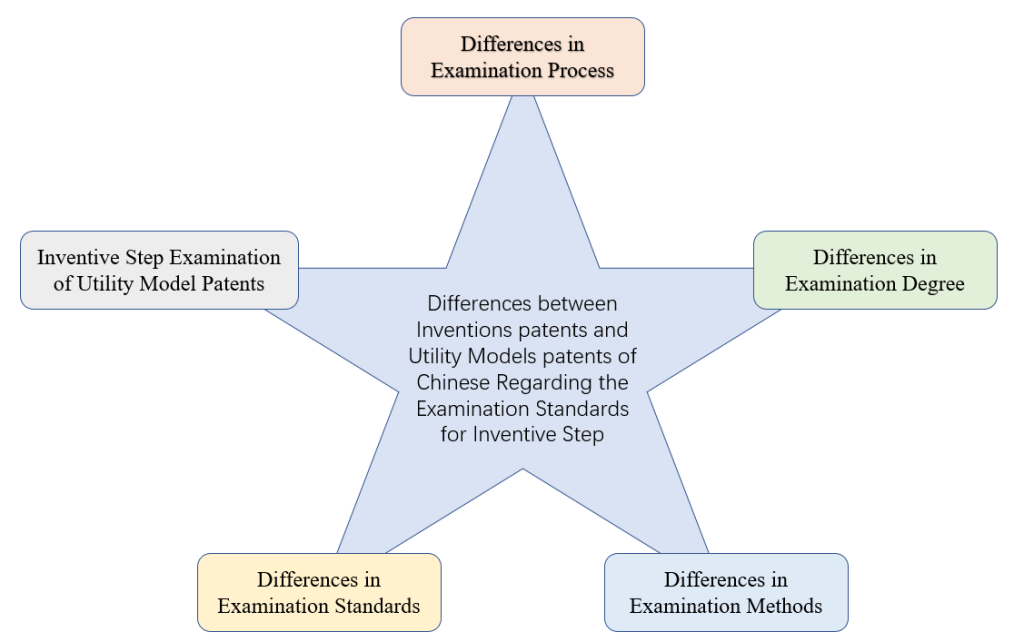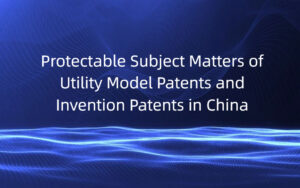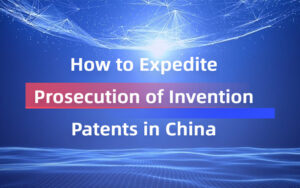Examination of Inventive Step for Patents in China
In the previous article, we introduced utility model patents (UMP) and invention patents in China, and their differences, including examination procedure. In this article, we will talk about their differences in inventive step examination in detail.

1. Examination Procedures
In China, a utility model patent (UMP) only needs to undergo the preliminary examination, and the UMP can be authorized if no reason for rejection is found after the preliminary examination. However, invention patents in China also require the substantive examination, in addition to the preliminary examination.
According to Chapters 1 and 2, Part 1 and Chapter 4, Part 2 of Guidelines for Patent Examination in 2021 of China, the scope of the preliminary examination of UMP and inventions includes formality examination of application documents, examination of obvious substantive defects, formality examination of other documents and examination of relevant fees.
And the substantive examination of inventions includes comprehensive examinations that whether the invention complies with novelty, inventive step, practical applicability and other substantive conditions stipulated by the Patent Law.
In general, the main difference is that, in the preliminary examination stage, Examiner examines whether the UMP possesses novelty and practical applicability, and the examination does not involve the examination of inventive step; while Examiner does not examine the above-mentioned contents for inventions in the preliminary examination, but examines whether the invention conforms to novelty, inventive step and practical applicability in the substantive examination.
2. Examination Standards
According to Article 22.3 of Chinese Patent Law , examination standards for inventive step of inventions and UMP are as follows: “The inventive step means that compared with the prior art, the invention has outstanding substantive features and significant progress, while the utility model has substantive features and progress. ”
It can be seen that the examination standards for inventive step of a UMP is lower than that of an invention. The differences in the inventive step standards of an invention and a UMP lie in “outstanding” and “significant”.
The difference in examination standards for inventive step between inventions and UMP may be understood as: the examination standards for inventive step of UMP and inventions differ only in the “examination degree”, and there is no difference in the “examination method”.
3. Examination Methods
Section 3.2.1, Chapter 4, Part 2 of Guidelines for Patent Examination in 2021 of China defines the “outstanding substantive characteristics” of the inventive step as follows: “To determine whether an invention has outstanding substantive features is to determine whether the claimed invention is obvious to those skilled in the art relative to the prior art.”
In order to determine whether the invention is obvious relative to the prior art, it is generally carried out through a “three-step method”. The first step is to determine the closest prior art; the second step is to determine the distinguishing features of the invention and the technical problem actually solved by the invention; and the third step is to determine whether the claimed invention is obvious to those skilled in the art.
According to the provisions of Section 4, Chapter 6, Part 4 of Guidelines for Patent Examination in 2021 of China, “For the relevant content of the inventive step examination for utility model patents, including the concept of inventive step, the examination principles of inventive step, the examination standards, and the inventive step determination of different types of inventions, please refer to the provisions of Chapter 4 of Part 2 of the Guidelines.”
The content of the inventive step examination of UMP and invention patents shall refer to the same part of the examination guidelines. When examining the inventive step of a UMP, the three-step method is also used, that is to say, it can be understood that there is no difference in the “examination method” in the examination of inventive step between a UMP and an invention.
4. Examination Degree
Section 4, Chapter 6, Part 4 of Guidelines for Patent Examination in 2021 states: “The differences in the standards for determining inventive step between the two (i.e., inventions and utility models) are mainly reflected in the technical inspiration of the prior art to the two. When determining whether there is technical inspiration in the prior art, there is a difference between an invention patent and a utility model patent, and this difference is reflected in the field and quantity of the prior art.“
· Field of the prior art
For invention patents, not only the technical field to which the invention patent belongs, but also its similar or related technical fields, as well as other technical fields where the technical problems to be solved by the invention can prompt those skilled in the art to search for technical means.
For utility model patents, it is generally focused on the technical field to which the utility model patent belongs. However, if the prior art gives clear inspiration, for example, there is a clear record in the prior art, which prompts those skilled in the art to search for relevant technical means in a similar or related technical field. The similar or related technical field may be considered.
· Quantity of the prior art
For invention patents, one, two or more items of prior art can be cited to evaluate the inventive step. For utility model patents, in general, one or two items of prior art can be cited to evaluate its inventive step, and for a utility model patent formed by “simple superposition” of prior art, a plurality of items of prior art can be cited to evaluate its inventive step according to the situation.“ (More details may be found in Section 4, Part 4 of Guidelines for Patent Examination in 2021 of China)
In addition, there is a view that in the third step of the “three-step method”, when “determining whether the claimed invention is obvious to those skilled in the art”, the requirement for “those skilled in the art” in the inventive step examination of utility model can be appropriately lowered, for example, determining may be performed by lowering the technical level of those skilled in the art.
Based on the above content, it is not difficult to see that when using the “three-step method” to conduct inventive step examination, the requirements for the field of prior art and the quantity of prior art for utility models are narrower and smaller than those required for inventions, which leads to the difference in the “examination degree” of the inventive step examination.
5. Conclusion
In general, the standard for inventive step of utility model patents is lower than that of invention patents. For the same technical solution, based on the purpose of protection, when the technical solution fails to meet the standards for inventive step and cannot obtain the authorization of the invention, or when the stability of the invention patent is insufficient, an attempt can be made to obtain the authorization of the utility model. Of course, the premise is that the applicant can accept the fact that the term of protection for a utility model is shorter than that for an invention.
In addition, it is worth noting that the applicant may choose to apply for a UMP and an invention patent for the same invention at the same time. At the same time, when applying for a utility model patent and an invention patent for the same invention at the same time, the applicant may claim the priority of the foreign application within 12 months of the priority date. However, when it is determined that the application enters a foreign country through the PCT route, and when the application is settled through the PCT within 12 months of the priority date, the applicant cannot apply for a utility model patent and an invention patent at the same time. In view of this, preferably, the applicant will determine how to choose based on the inventive step of the application.

